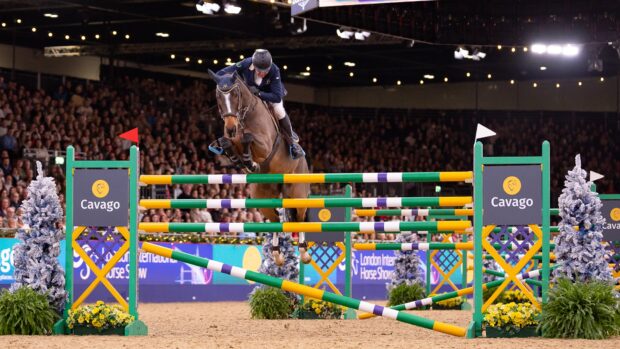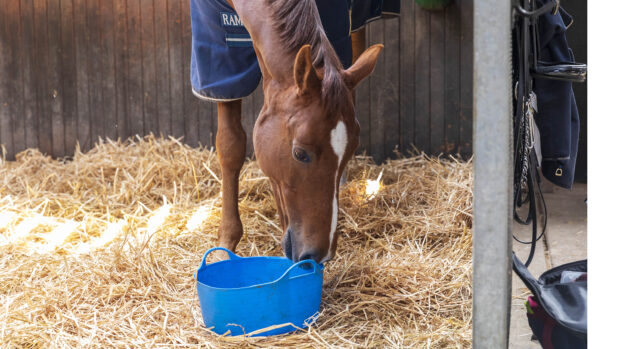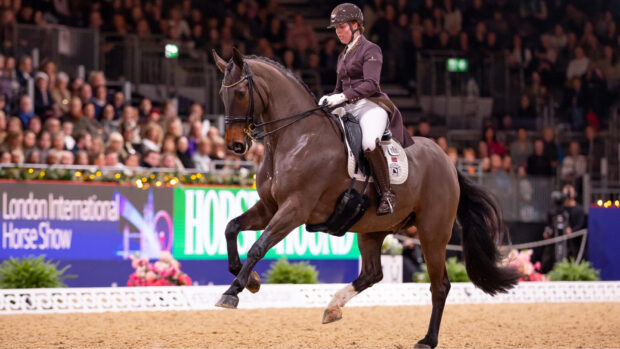An Irish trainer has been banned for six months after a horse in his care was “nobbled” with ACP before a race.
Trainer Charles Byrnes was fined €1,000 (£885) and had his licence suspended for six months after Viking Hoard was subject to “a dangerous degree of sedation” in a hurdle race at Tramore on 18 October 2018. The hearing was held by the Irish Horseracing Regulatory Board (IHRB) referrals committee via Zoom on 7 January.
Betting for Viking Hoard opened at 4/1 but his price drifted to a starting price of 8/1. The hearing notes state that the gelding ran “conspicuously badly”, became rapidly detached from the rest of the field and was pulled up before the seventh hurdle.
A urine sample taken after he was pulled up was found to contain hydroxyethylpromazinehydroxide (HEPS), a metabolite of ACP (acepromazine). The B sample confirmed the finding.
ACP is licensed for use in horses as a prescription-only medication and is not allowed on racedays. It is a rapidly acting sedative that takes effect within 15-30 minutes and can last up to six or seven hours.
Lynn Hillyer, IHRB head of anti-doping and chief veterinary officer, stated that the drug was causing Viking Hoard’s low post-race heart rate, and that the concentrations he had in his system affected his performance, the integrity of the race, and the health, safety and welfare of the animal, rider, stable staff and other riders and horses in the race.
“In this case, the evidence showed that Viking Hoard was subject to a dangerous degree of sedation during the race, which was masked until the rider was required to ask the gelding for an early effort in the race,” added the ruling.
“In her opinion, the betting patterns were not coincidental, and Dr Hillyer concluded that the evidence demonstrated that Viking Hoard had been ‘nobbled’ prior to the race. This conclusion was not challenged. The committee accepted that this inference is correct and fully justified by the evidence.”
Mr Byrnes was told of the result on an unannounced visit by IHRB veterinary officer Nicola O’Connor and deputy head of security Declan Buckley on 30 November that year. The medicines register did not record any administration of ACP to Viking Hoard and neither Mr Byrnes nor his son, Cathal, had any explanation for the positive test. They have both maintained that they did not give the horse sedative and Mr Byrnes said he has not used ACP in his yard for “many years”.
The IHRB received alerts from the British Horseracing Authority relating to betting patterns on the horse, relating to Tramore and previous races, which were based on information from commercial betting exchanges that allow for widespread laying (betting against horses winning).
The hearing found there was “no evidence” to connect Mr Byrnes with the betting patterns, but that they are “part of the full and relevant context to the events of 18 October 2018 at Tramore and informed the subsequent investigation into those events”. Mr Byrnes maintained he was not involved in the various betting activities and has “no knowledge of any of these matters”.
He said he arrived at the course with his son and the horse around two hours before the race and, to the best of his knowledge, they had not stopped en route to the course.
He conceded that the gelding had been left unattended in the stable yard twice before the race, for a total of around 20 to 25 minutes. The first was when Cathal went to look for a rug and the second time when the pair went to find something to eat.
“Although not alleged to be involved directly in the administration of ACP, his neglect in supervising the gelding facilitated what was clearly organised pre-race doping of his charge,” stated the ruling.
“The deliberate doping of Viking Hoard close to race time in this case could not conceivably have been a casual or opportunistic event.”
It added: “[Cliodhna Guy, IHRB head of legal, licensing and compliance, who presented the case] submitted that although it was not alleged that Mr Byrnes was directly involved in either the administration of ACP or the betting patterns, he had taken risks in discharging his responsibilities under the rules that resulted in an extremely serious outcome from the perspective of the IHRB.”
Article continues below…
You might also be interested in:

Subscribe to Horse & Hound magazine today – and enjoy unlimited website access all year round
The ruling concluded that Mr Byrnes was “seriously negligent” in the supervision of the horse on the day of the Tramore race and the “actual and potential consequences of the failure to supervise in this case are disturbing”.
“Significant actual damage flowed from the neglect of the trainer,” it concluded.
“The damage was financial in the case of affected punters, and reputational in the case of the racing industry. This case illustrates the specific and additional challenges and dangers to the integrity of racing posed by the widespread ability to back horses to lose races for significant returns.
“The desirability of this practice or how it might be better controlled within the available regulatory resources is worthy of further, constant review.”
Horse & Hound magazine, out every Thursday, is packed with all the latest news and reports, as well as interviews, specials, nostalgia, vet and training advice. Find how you can enjoy the magazine delivered to your door every week, plus options to upgrade to access our H&H Plus online service which brings you breaking news as it happens as well as other benefits.




